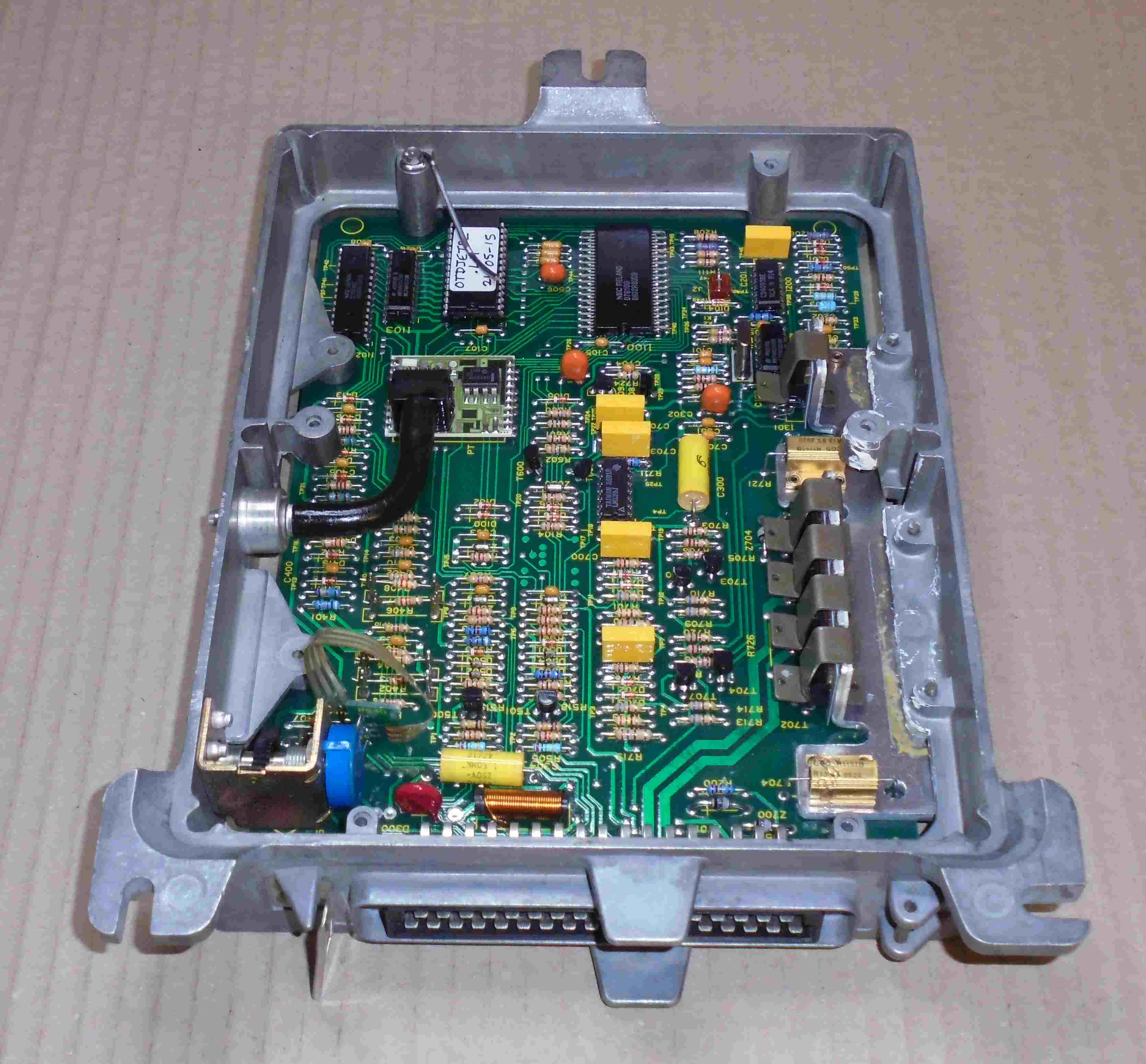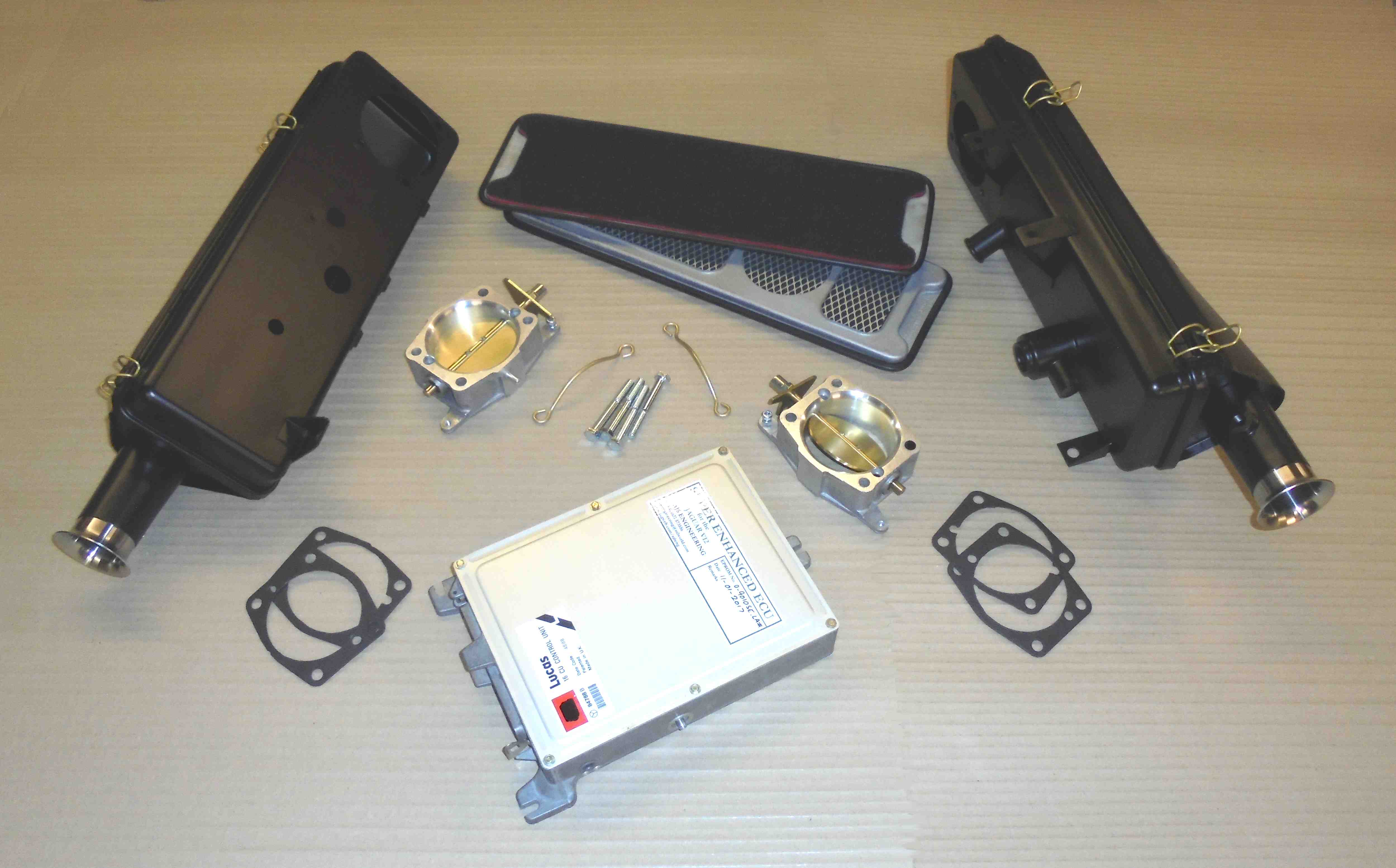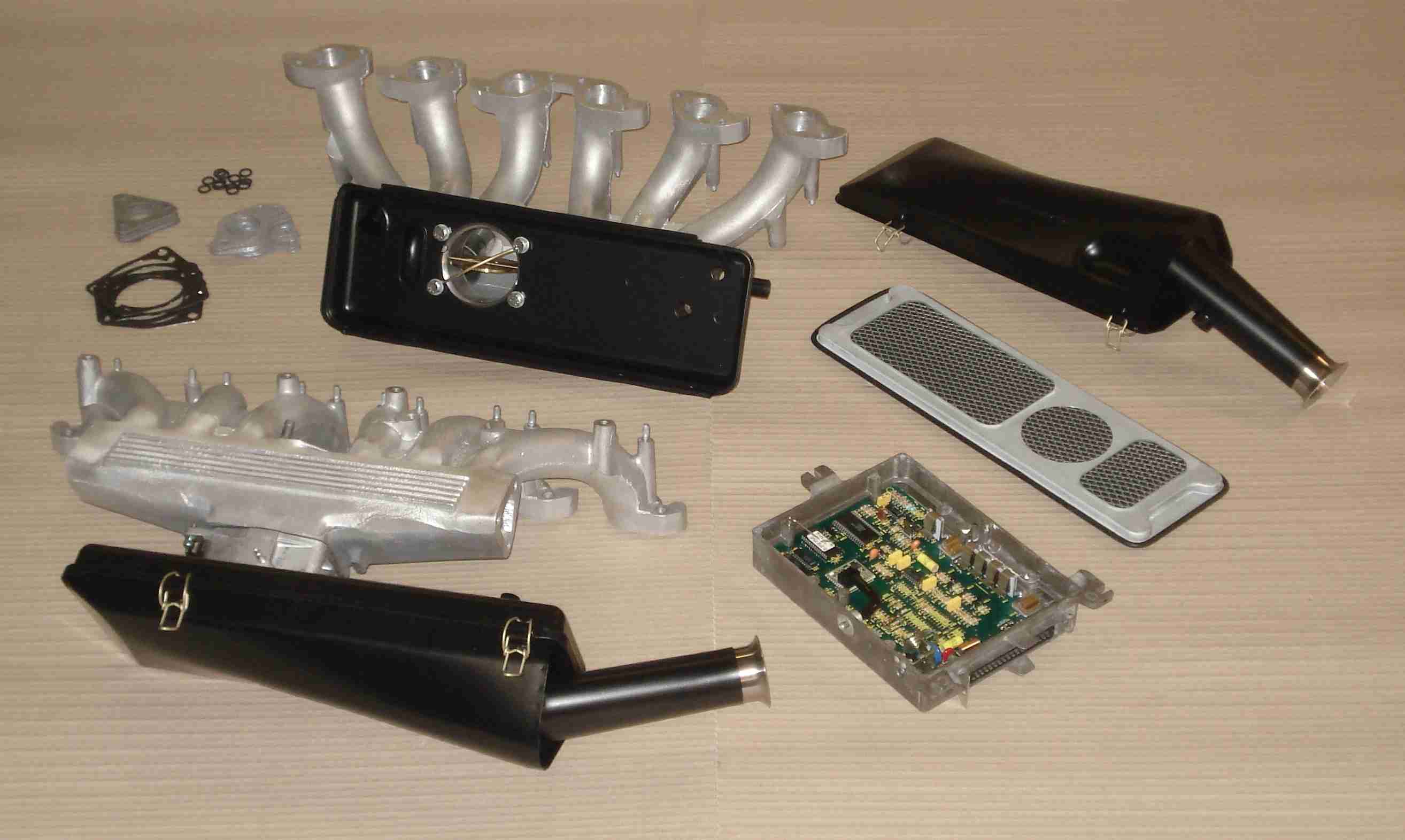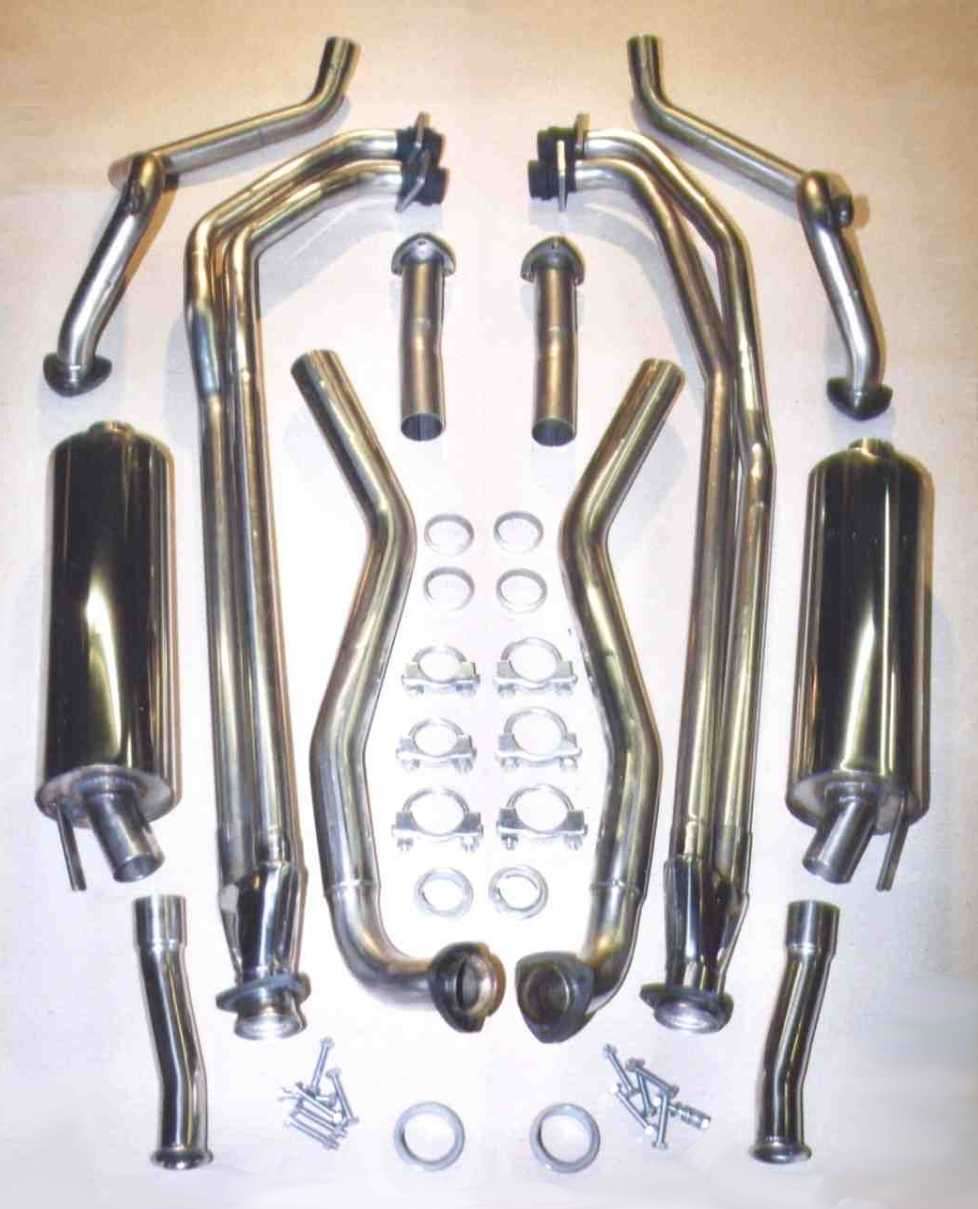A brief guide to cost effective ways of increasing the performance of the Jaguar v12 engine
The Jaguar V12 was designed in the late 1960s by a team of engineers as highly regarded as any in the motor industry at that time – indeed many of them had been involved in producing the succession of World Championship winning Coventry Climax racing engines only a few years before. Now, though, the emphasis was on creating a refined, reliable and impressive power unit fit for a range of volume production cars able to match any in the world. Performance was important but had to be delivered with finesse that would rival a Rolls-Royce.
This entailed compromises that, with care, can be adjusted to improve performance without sacrificing reliability or significantly affecting the qualities that made these cars so desirable.
The V12 was designed from the outset to have electronic fuel injection (EFI) using a system made by AE Brico but the system was cancelled at a late stage.
Jaguar hurriedly concocted the four carburettor installation to see the engine through its first few years until an alternative EFI system, Bosch D Jetronic, could be introduced with assistance from Lucas. Hardware such as inlet manifolds and throttles carried over with only quite modest changes from the Brico original prototypes right through the engine’s entire production life, apart from those early years with carburettors.
1. Replacing the Early Four Carburettors of the V12 E Type (or XJ12) with Electronic Fuel Injection.
Performance, emissions, fuel efficiency and drivability are all much improved by upgrading to EFI and the most cost-effective way is to source the necessary parts from a mid-1980s XJS or XJ12 HE, thus maintaining familiarity for those having to service the car.
V12 E Type with EFI from an XJS.
I publish a guide (available as a PDF download for £25) for carrying out this conversion and I can program the ECU to suit the earlier engine. I can also provide upgraded induction systems and exhaust systems to lift the car’s appeal and performance still more.
2. Upgrading the Fuel Injection System.
The Super Enhanced ECU Upgrade.
Although the standard fuel injection ECU is mapped accurately for the engine requirement it is compromised by the need to obtain favourable results when tested for exhaust emissions and fuel consumption under specified certification test procedures. In consequence most later engines (HE onwards) feel rather ‘flat’ and lazy, unlike what might be expected of an engine with such a pedigree behind it.
Quite small changes to the fuel mapping and to the way the ECU responds to changes such as rapid throttle movement can make a very noticeable difference to the feel and responsiveness of the engine. Strangely this indirectly influences shifts of the auto transmission which many customers notice also feels more lively.
Lucas 16CU fuel controller.
This is what our Super Enhanced ECU upgrade provides (for all V12s from 1980 onwards except the X300 6 litre saloon) but the car is still able to pass an aftermarket emission test.
The exact details of the Super Enhanced ECU can vary according to the model and application. It is not applicable to earlier cars with D Jetronic injection although I can modify those ECUs in similar ways to suit induction, exhaust, and other upgrades.
I can also modify ECUs to suit manual transmission conversions or for different engine specifications including larger capacities and race applications.
Any modification that significantly improves breathing, either via the exhaust system or the induction system, will require an upgrade to the ECU to obtain the expected performance.
3. Upgrading the Induction System.
3a. Large Throttle Kit.
By modestly opening up the air intakes, increasing the size of the throttles, and changing to low loss (and washable) air filters, combined with a modified ECU for early cars or the SE ECU for later ones, can add 20 – 25 b.h.p. at the top of the speed range. The intakes must not be opened up too much or noise can become too obtrusive, unless the car is intended for racing.
Our low loss air filters are mounted on a modified version of the same metal frame used for the original paper filters to obtain proper support because we found that in this application the moulded edges of the popular gauze type filters can fail under clamping pressure and then the element can collapse onto the throttle.
The car will still be able to pass an aftermarket emission test.
The Large Throttle kit is not applicable to the 6 litre saloons (XJ81 and X300) because of their different intake arrangement with trunking from remote air filters.
Typical Large Throttle kit – 1989 XJS V12.
It is sometimes advocated that cold air intakes drawing air from ahead of the radiator would provide a power gain, which is true, but in practice the air temperature within the engine bay drops significantly with rising speed compared to the high under-bonnet temperatures that are obvious when idling. Whilst cold air is certainly better for power because of increased charge density, conversely hot air is better for cruise fuel efficiency because less density reduces pumping losses due to throttling, so the standard arrangement is actually quite a good compromise for better economy in low speed driving and power at high speeds. I used to provide supplementary cold air ducts added to the air boxes of our upgrades but eventually concluded that the modest gain obtained is hardly worth the extra bother so they were discontinued.
3b. Plus Torque Kit.
Extensively reworked inlet manifolds with the addition of extended internal trumpets boosts mid-range torque by approximately 13% combined with the attributes of the SE ECU and Large Throttle Kit.
Typical Plus Torque kit – 1986 XJS HE V12.
A simplified version without large throttles is available for the 6 litre saloons.
The car will still be able to pass an aftermarket emission test.
4. Upgrading the Exhaust System.
4a. Silencer Substitute Pipes.
These replace the under-floor silencer boxes which are of reverse flow type and are the main restriction in the system, so an increase of 10-15 b.h.p. is obtained and naturally a moderate increase of noise level. As long as the rear silencers are in good condition most people would not find the noise level excessive unless the car is an XJS convertible, in which case the alternative of straight-through silencer boxes may be advisable.
V12 Silencer Substitute Pipes.
This is the only performance upgrade that does not require changes to the ECU although our SE ECU will still cheer the car up further.
4b. TT Systems.
These are true extractor exhaust systems designed to work with the standard cast iron manifolds to boost mid-range torque by approximately 12%. (The principle of operation is explained in detail in a separate webpage). Modification of the fuel ECU is necessary to suit the improved engine breathing and is included in the price. The SE ECU upgrade can be also added at a favourable price.
The TT System is available as the basic front section for the XJS or XJ12 if the existing over-axle pipes and rear silencers are in good condition. It is also available as a complete system with a standard size rear section which is ideal for road use. For track use it can be provided with a large bore rear section for a few extra b.h.p. Mounting points for feedback sensors can be provided. E Type TT systems are only available as complete systems, with or without under-floor silencers, because they have no parts in common with the original.
XJS V12 TT system.
The car will still be able to pass an aftermarket emission test for non-catalyst cars.
4c. Large Bore Systems.
There is not enough space to accommodate catalysts with the TT system so if catalysts are necessary for emissions compliance the only performance option is a system with feedback sensors in the down pipes followed by low-loss catalysts leading into a complete straight-through system. Larger over-axle pipes and rear silencers can be specified to produce a more throaty sound and a modest power gain of about 10-15 b.h.p.
4d. Standard Pattern Replacement Systems.
These are not really intended as performance systems, although having straight through under-floor silencers instead of the original restrictive reverse flow design, they do provide a few extra b.h.p. Available also with feedback sensor bosses and catalysts.
4e. Tail Pipe Embellishments.
Various twin pipe and large bore tail pipe options are available made from polished stainless steel.
A selection of tail pipes.
5. The False Trails.
5a. So-called ported and gas-flowed cylinder heads are a costly way of getting very little gain. Reworking the inlet ports is only worthwhile for a full racing application otherwise just a mild clean-up of any casting imperfections is about all that is necessary and then only if the heads are being stripped in any case.
5b. Increasing the valve sizes is another costly exercise which can only be justified for a full race engine and even then it should be remembered that it is possible to obtain over 500 b.h.p. from a flat-head V12 without increasing the valve sizes.
5c. Changing to camshafts with more lift and duration has an adverse effect on mid-range torque that can only really be justified if the engine is intended for a full race application, particularly with the standard 3 speed auto transmission. Emissions compliance is likely to become a problem.
5d. Tubular multi-branch exhaust manifolds can only work effectively on these engines if the individual pipes are in the region of 3 to 4 feet (90 – 120 cm) long – for which there isn’t room in most cars. Short branch tubular manifolds (i.e. about 15” or 40 cm) simply don’t give any benefit at all. That’s why we developed our TT systems.
5e. Weber carburettors might have great visual appeal but they need long ram pipes to work effectively on the V12 (which means an enormous bonnet bulge), drivability can be abysmal, emissions will worsen, and proper air filtration is difficult to accommodate.
5f. Lightened flywheels are most effective in vehicles with a high power/weight ratio and strong acceleration, such as motor bikes and race cars. Heavier cars or those with poor traction are unlikely to derive much benefit and may suffer loss of refinement at idle and low speed operation.
5g. Although it would be wrong to say that the Jaguar V12 was built to perfection, it was certainly made to high standards for the time in terms of component sizes, fits and balance. The potential for improvement from further attention in these respects by so-called ‘blueprinting’ is therefore rather limited and hardly likely to be cost effective.
Obviously I do not offer any of the items or topics in this section.
6. Pursuing More, Costs (a lot) More.
It is possible to do lots of more extreme things to the Jaguar V12 – such as 500 + b.h.p. racing engines, 8 litre conversions, and supercharging. The problem is that the market for such grandiose pursuits is so limited that there is no ready pool of volume produced and inexpensive parts so a significant budget will be required.
It becomes difficult to obtain high power outputs (i.e. above 400 – 450 b.h.p.) from the HE type of heads because of the pocketed exhaust valves so early flat heads (prior to 1981) are a better choice for such ambitions.
My product range does not extend to these radical engine transformations although my induction and exhaust upgrades and ECU remapping may well be useful for getting the best from them.







